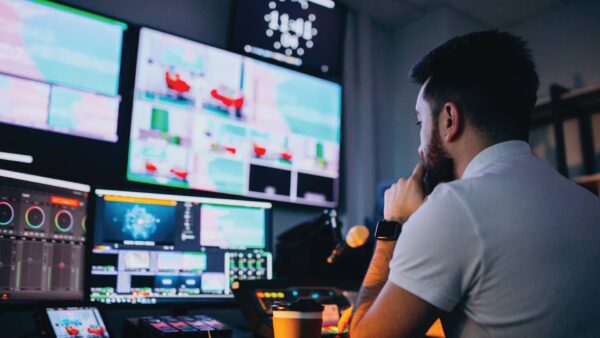Media Monitoring: Social media has profoundly altered how we communicate, enabling instantaneous sharing of opinions and information on a global scale. The ability to freely express thoughts online is essential; however, from a brand’s perspective, monitoring public discourse is crucial. This is where media monitoring comes into play, allowing brands to keep track of mentions across traditional and digital media. Let’s delve into media monitoring, how it differs from media tracking, and its significance for brands today.
What is Media Monitoring?
Media monitoring involves systematically reviewing various media channels to understand what is being said about a brand. Essentially, it is about listening to conversations around your brand. In the past, this task was straightforward—literally a cut-and-paste job from newspapers and magazines. With the advent of digitalization and social media, however, it has evolved into a complex process that requires more sophisticated tools and techniques.
Why is Media Monitoring Important?

Media monitoring is critical to the long-term success of any organization. It enables brands to stay informed about their environment with minimal resource expenditure. But why exactly is it so crucial? Here are some compelling reasons:
Building a Robust Brand Identity
In today’s competitive market, a strong brand identity is paramount. To gauge public perception, your audience must first understand your brand’s essence. Media monitoring allows you to communicate clear information, dispel misconceptions, and thereby strengthen your brand identity. By understanding how your brand is perceived, you can align your messaging with your audience’s expectations.
Managing Reputation and Crises
Media monitoring provides insights into how your brand is represented in media, whether positively or negatively. Positive feedback can be celebrated, while negative comments offer opportunities for improvement and customer satisfaction enhancement. In potential crises, timely media monitoring enables proactive response strategies. Even if a crisis unfolds, media monitoring helps craft effective crisis communication strategies.
Conducting Competitive Analysis
Understanding your competitors’ strategies is vital for staying ahead. Media monitoring reveals competitors’ messaging and strategies, enabling you to preemptively design counter-strategies. Beyond their successes, you can identify their shortcomings and leverage those insights to improve your offerings and plans.
Evaluating the Effectiveness of Efforts
Media monitoring facilitates assessment of audience reactions to your initiatives. This data-driven approach supports informed decision-making, saving time and allowing for more creative pursuits. Reports and insights derived from media monitoring guide you in refining your strategies for greater impact.
Creating Innovative Content
Experienced marketers recognize the need for fresh, engaging content in an oversaturated market. Media monitoring uncovers relevant trends and keywords that can inspire innovative content ideas. By staying attuned to emerging themes, you can produce content that resonates with your audience.
How to Conduct Media Monitoring

Define Your Objectives
Establishing clear goals is essential. Focus on the areas most relevant to your brand’s objectives.
Monitor Competitors
Observe the discourse surrounding your competitors to strategize effectively. Understanding both positive and negative feedback can inform your tactics.
Avoid Irrelevant Keywords
Prevent data overload by refining your keyword strategy. Concentrate on meaningful terms to extract valuable insights from the noise.
Analyze and Act on Results
Evaluation and analysis are crucial for enhancing brand reputation. Use the data collected to refine your strategies, whether the feedback is positive, neutral, or negative.
Media Monitoring vs. Media Tracking
While media monitoring and tracking may seem similar, they serve distinct purposes. Media monitoring involves real-time observation of brand mentions for feedback and risk mitigation. In contrast, media tracking involves documenting past media interactions to analyze long-term progress and effectiveness.
Media Monitoring in Advertising
In advertising, media monitoring assesses the performance and reception of ads across platforms. Many brands partner with media monitoring services that specialize in advertising tools, gaining insights into the success of campaigns and audience responses.
Conclusion
In summary, when utilized effectively, media monitoring can significantly benefit brands. By employing advanced tools and techniques, companies can stay informed about industry trends and public sentiment. To gain deeper insights into your brand’s impact and perception, consider adopting a media monitoring tool today.
FAQs about Media Monitoring
What are the key benefits of media monitoring?
Media monitoring enhances brand identity, aids in crisis management, informs competitive analysis, measures campaign effectiveness, and inspires content innovation.
How does media monitoring help in crisis management?
Media monitoring allows for early detection of potential crises, enabling brands to respond swiftly and craft effective communication strategies to mitigate impact.
Can media monitoring improve content creation?
Yes, media monitoring identifies trends and keywords, helping brands generate creative and relevant content that resonates with their audience.
How do media monitoring and media tracking differ?
Media monitoring focuses on real-time observation of brand mentions, while media tracking documents past interactions to analyze long-term progress.
Why is competitive analysis important in media monitoring?
Competitive analysis reveals competitors’ strategies, enabling brands to develop proactive tactics and capitalize on competitors’ weaknesses.
What tools are used for media monitoring in advertising?
Brands often use specialized media monitoring services and advertising tools to evaluate the success and audience response of their advertising campaigns.

